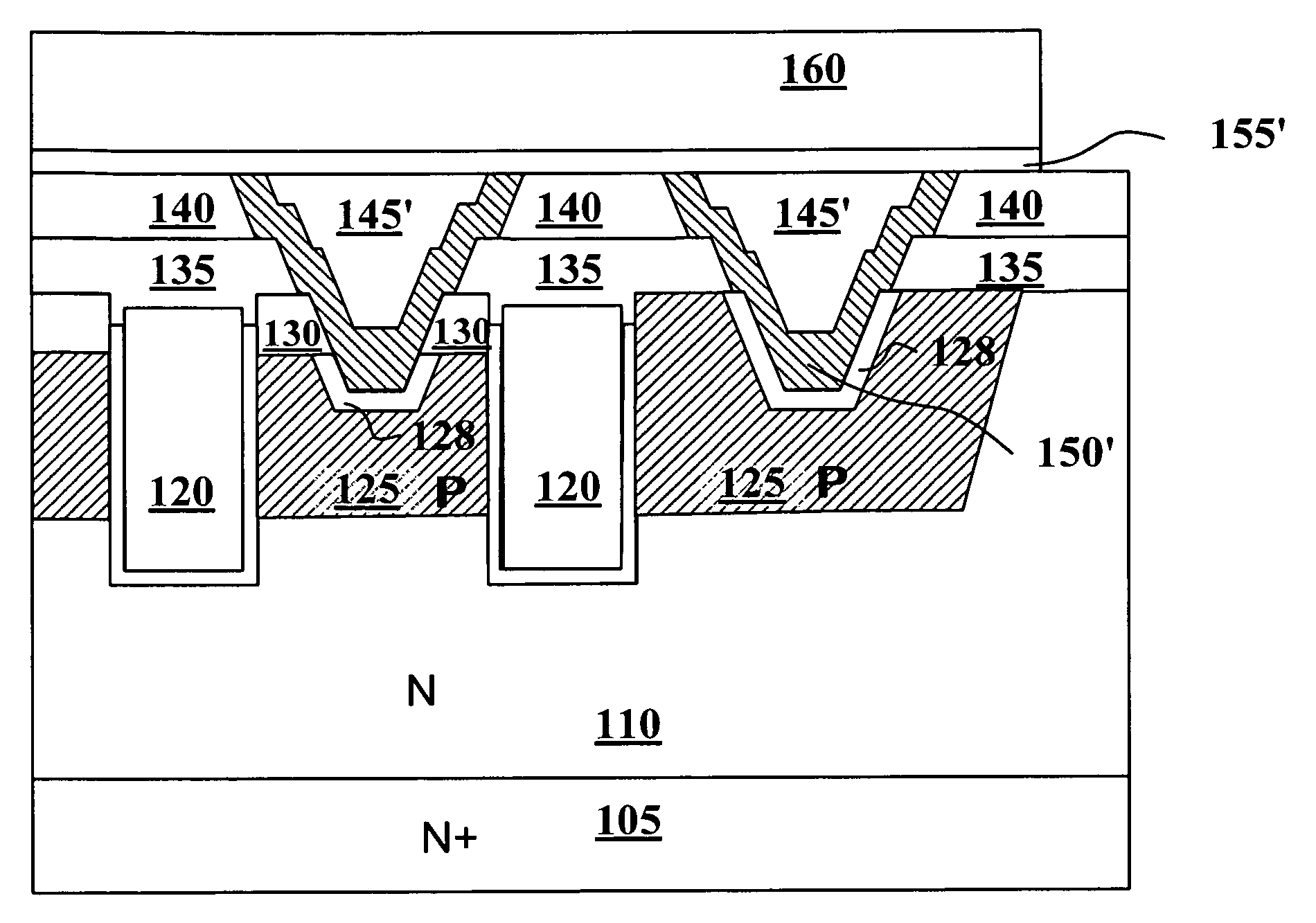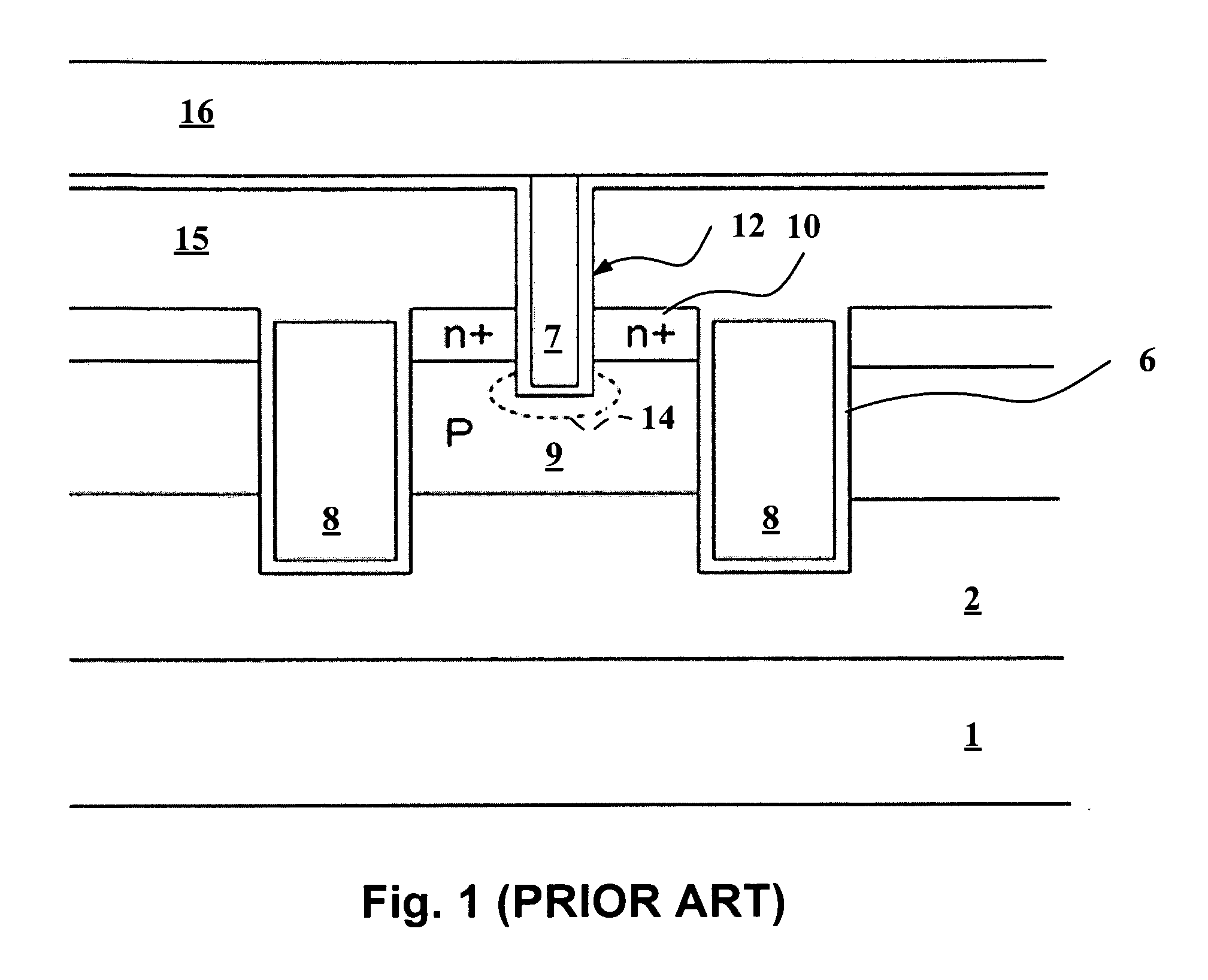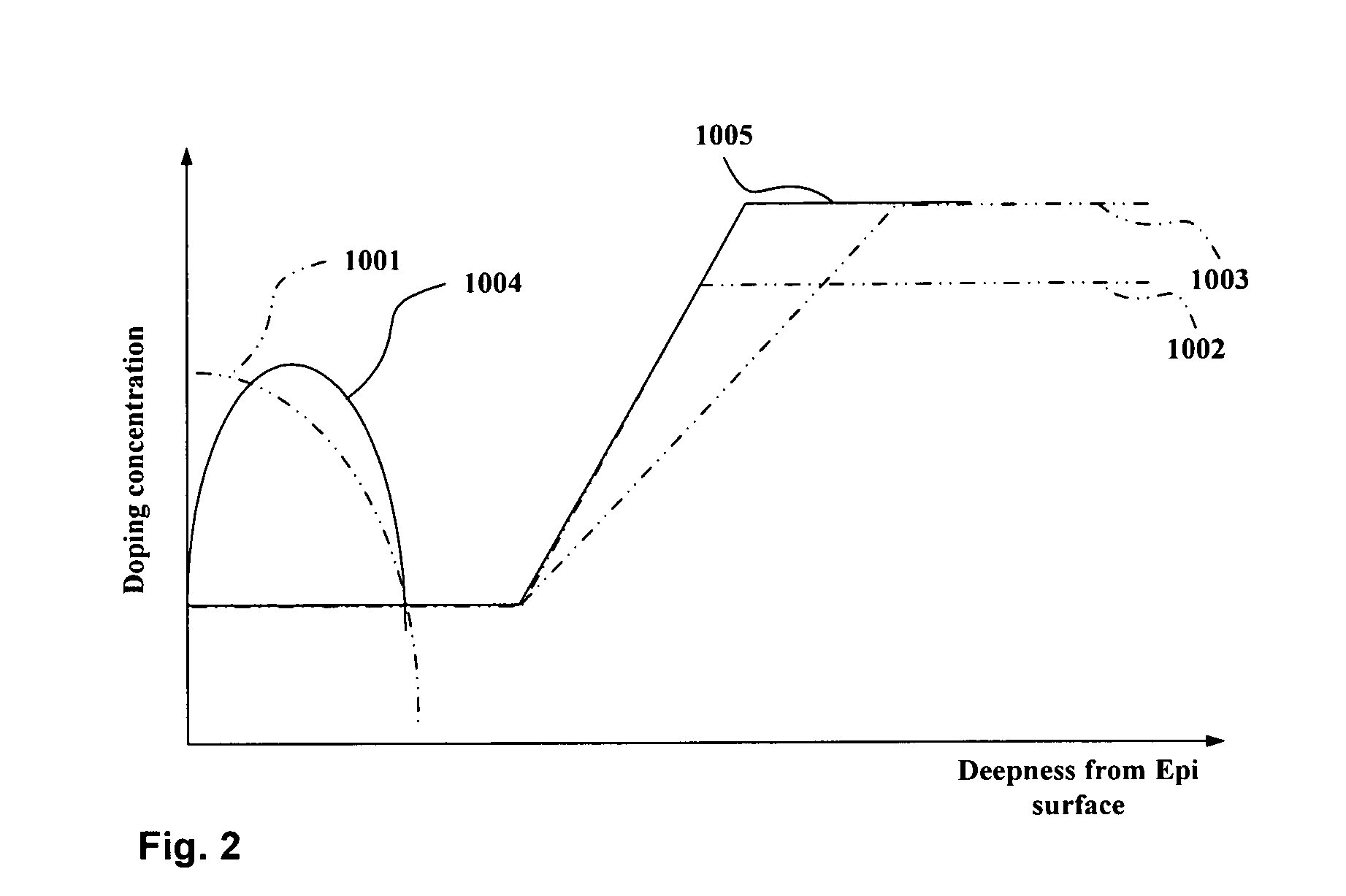Trench MOSFET with on-resistance reduction
a technology of mosfet and drain, which is applied in the field of cell structure and fabrication process of power semiconductor devices, can solve the problems of poor metal coverage, unreliable electrical contact, and difficulty, and achieve the effect of reducing drain and source resistance, shortening p-body anneal or diffusion, and reducing drain-source resistan
- Summary
- Abstract
- Description
- Claims
- Application Information
AI Technical Summary
Benefits of technology
Problems solved by technology
Method used
Image
Examples
Embodiment Construction
[0023]Please refer to FIG. 3 for preferred an embodiment of this invention where a metal oxide semiconductor field effect transistor (MOSFET) device 100 is formed on a Phosphorus N+ substrate 105 formed with an N epitaxial layer 110. The MOSFET 100 includes a trenched gate 120 disposed in a trench with a gate insulation layer formed over the walls of the trench. A body region 125 that is doped with a dopant of second conductivity type, e.g., P-type dopant, extends between the trenched gates 120.
[0024]For the purpose of reduce the drain-source resistance significantly, the substrate of this invention is Phosphorus substrate as mentioned which has a resistivity lower than 2.0 mohm-cm. On the other hand, P-body region is implemented by medium or high energy (100˜400 KeV) Ion Implantation and followed by Anneal at 1000˜1100 C to form a retrograded P-body / N-Epi junction (1004 in FIG. 2) with thinner Epi. And incorporated with the Phosphorus substrate (1005 in FIG. 2), the impact of drift...
PUM
| Property | Measurement | Unit |
|---|---|---|
| refractive index | aaaaa | aaaaa |
| temperature | aaaaa | aaaaa |
| temperature | aaaaa | aaaaa |
Abstract
Description
Claims
Application Information
 Login to View More
Login to View More - R&D
- Intellectual Property
- Life Sciences
- Materials
- Tech Scout
- Unparalleled Data Quality
- Higher Quality Content
- 60% Fewer Hallucinations
Browse by: Latest US Patents, China's latest patents, Technical Efficacy Thesaurus, Application Domain, Technology Topic, Popular Technical Reports.
© 2025 PatSnap. All rights reserved.Legal|Privacy policy|Modern Slavery Act Transparency Statement|Sitemap|About US| Contact US: help@patsnap.com



